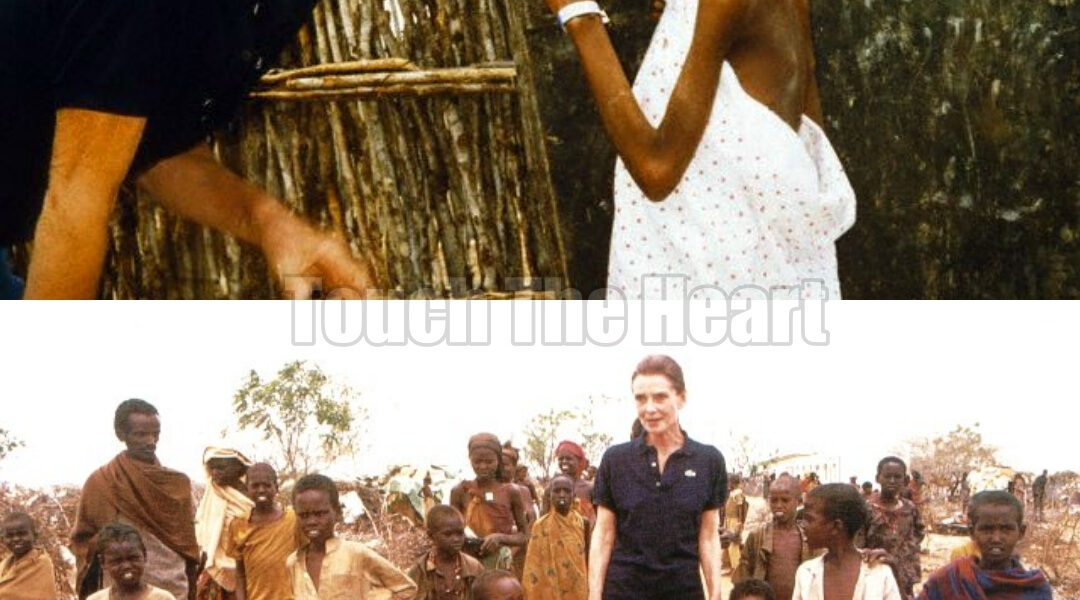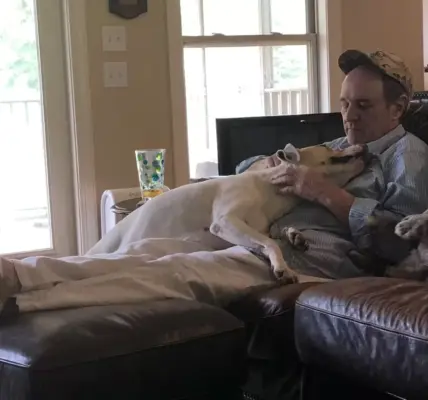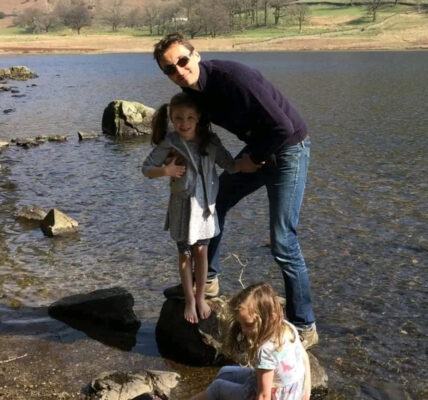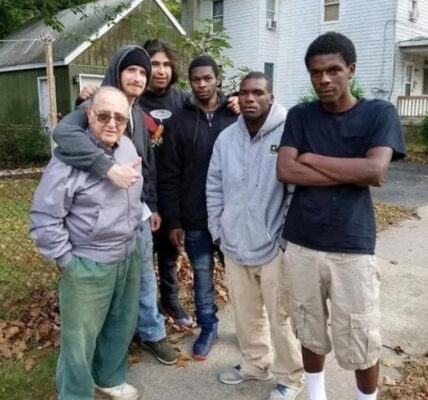Before the world knew her as Audrey Hepburn — the woman in the little black dress, the silver-screen icon, the symbol of elegance — she was just a hungry girl in a war-torn country, trying to stay alive.
And she danced.

Not on stages, not under spotlights, not for applause — but in secret, in cellars and barns where the windows were covered and every breath felt borrowed. She danced because movement was the only thing the war couldn’t steal from her. She danced because even a starving body still had a soul that needed rescue.
It was the winter of 1944 — the last winter of the war, the coldest, the hungriest. In the Netherlands, where Audrey lived with her mother, everything that once felt normal was gone. Streets were patrolled by German soldiers. Food disappeared. Electricity vanished. Families burned furniture to stay warm. Children walked miles for scraps of potato peels, or boiled tulip bulbs just to quiet the ache in their stomachs.
Audrey was 15. Her cheeks were hollow. Her arms, once strong from ballet, were thin as reeds. Some days she was so malnourished she fainted in the middle of practice — but she always got up again.
Because practice was not about perfection anymore.
It was about resistance.

The Dutch underground needed money. And money, in wartime, needed courage. Audrey and a small group of dancers, musicians, and young performers offered what they had — their talent, their bodies, their risk.
They held what they called “black performances.” Secret shows. Illegal gatherings. Curtains drawn, candles lit, no applause — because applause could mean discovery, and discovery meant arrest.
Children stood guard outside as lookouts, pretending to play while memorizing the rhythm of footsteps. If soldiers approached, they tapped the window twice. Inside, the music would stop. The dancers would scatter, bodies pressed into corners, breath frozen in throats.
But as long as the candles still flickered, the show continued.
“We couldn’t clap,” Audrey later said, “but I could feel their hearts beating with mine.”
That was the first audience she ever loved.
And maybe the most grateful one she ever had.
War was not just hunger — it was loss.
Her uncle was taken and executed by the Nazis, a punishment meant to terrify the town into obedience. Her brother was sent to a labor camp. Audrey herself carried underground messages inside her worn shoes, pretending to skip along the road like a child, even though every step carried danger.
She learned very early that the smallest person can risk the biggest thing.
But hunger — hunger was the slowest kind of violence. She was so weak she couldn’t lift her leg high at the barre anymore. When she walked, she felt the bones move under her skin. Her mother rationed food carefully, sometimes giving Audrey her own portion. “You’ll need your strength when the war ends,” she said. Audrey never forgot it.
There were days when tulip bulbs were dinner. Bitter, gritty, almost impossible to swallow — but food. “I can still taste them,” she said many years later, “and I can still feel the shame of eating them.”
But she survived.

And survival is its own quiet kind of rebellion.
When the war finally ended, she didn’t celebrate. She didn’t cheer. She slept — for hours, then days — until the body that had carried too much finally let go.
She would never be the prima ballerina she dreamed of becoming. The war had taken too much strength from her bones. But it had given her something else — something rarer, something she didn’t realize she was carrying:
Depth.
The kind that cannot be taught.
The kind that does not fade with beauty.
The kind that lets the world look at your face and feel something behind it.
Years later, when the world watched her in Roman Holiday, they saw a princess escaping a cage she didn’t ask to live in — and they believed her.
When she held a guitar in Breakfast at Tiffany’s and sang “Moon River” so softly it felt like a confession, they leaned in without knowing why.
It was because Audrey didn’t act softness.
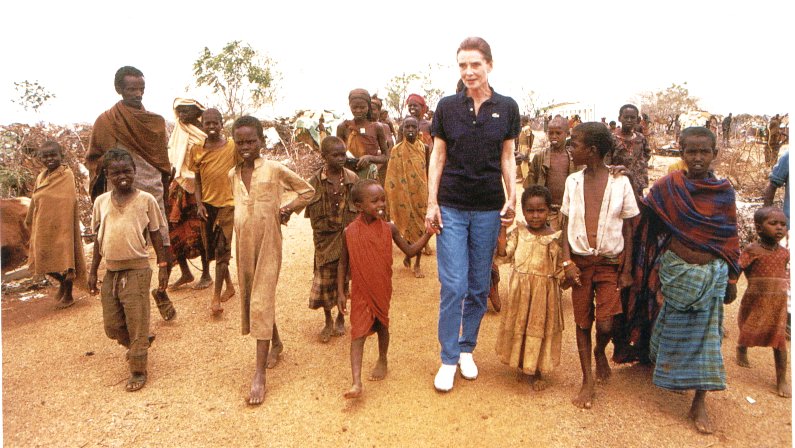
She had earned it.
Fame didn’t change her. It simply gave her access to the kind of life she once thought existed only for other people. But she never forgot the child she had been — the one who chewed grass to survive, the one who looked at bread like a miracle, the one who danced to raise money for resistance instead of applause.
So when UNICEF asked her to serve as an ambassador, she didn’t hesitate.
She went to Ethiopia — and recognized the eyes of starving children as if she were looking into a mirror from 50 years earlier. She flew to Bangladesh, to Somalia, to the places the world pretended not to see, and she did not smile for the cameras.
She wept.
“I know what hunger feels like,” she told reporters. “I know what it’s like to be afraid — truly afraid.”
But the most powerful thing she ever said was quiet:
“I remember. That is why I am here.”
Her fame bought her a platform.
Her past gave it meaning.

When she died, the world grieved a movie star.
But the people who knew her best — the ones who saw her sit cross-legged in the dirt, spoon-feeding children who hadn’t eaten in days — they grieved something else.
They grieved a woman who never let the world harden her.
A woman who survived war but never stopped believing in gentleness.
A woman who once danced in the dark to help strangers live another day — and later spent her life helping strangers survive whole wars of their own.
Audrey Hepburn’s legacy isn’t the little black dress.
It isn’t Tiffany’s window.
It isn’t the diamonds, or the posters, or the legend of flawless beauty.
Her legacy is a teenage girl with an empty stomach and a full heart, standing barefoot on a cracked wooden floor in a candle-lit barn, dancing for people who could not clap…
…and doing it anyway.
Because hope is never measured by applause.
It is measured by the courage to keep moving — even when the world around you is falling apart.
